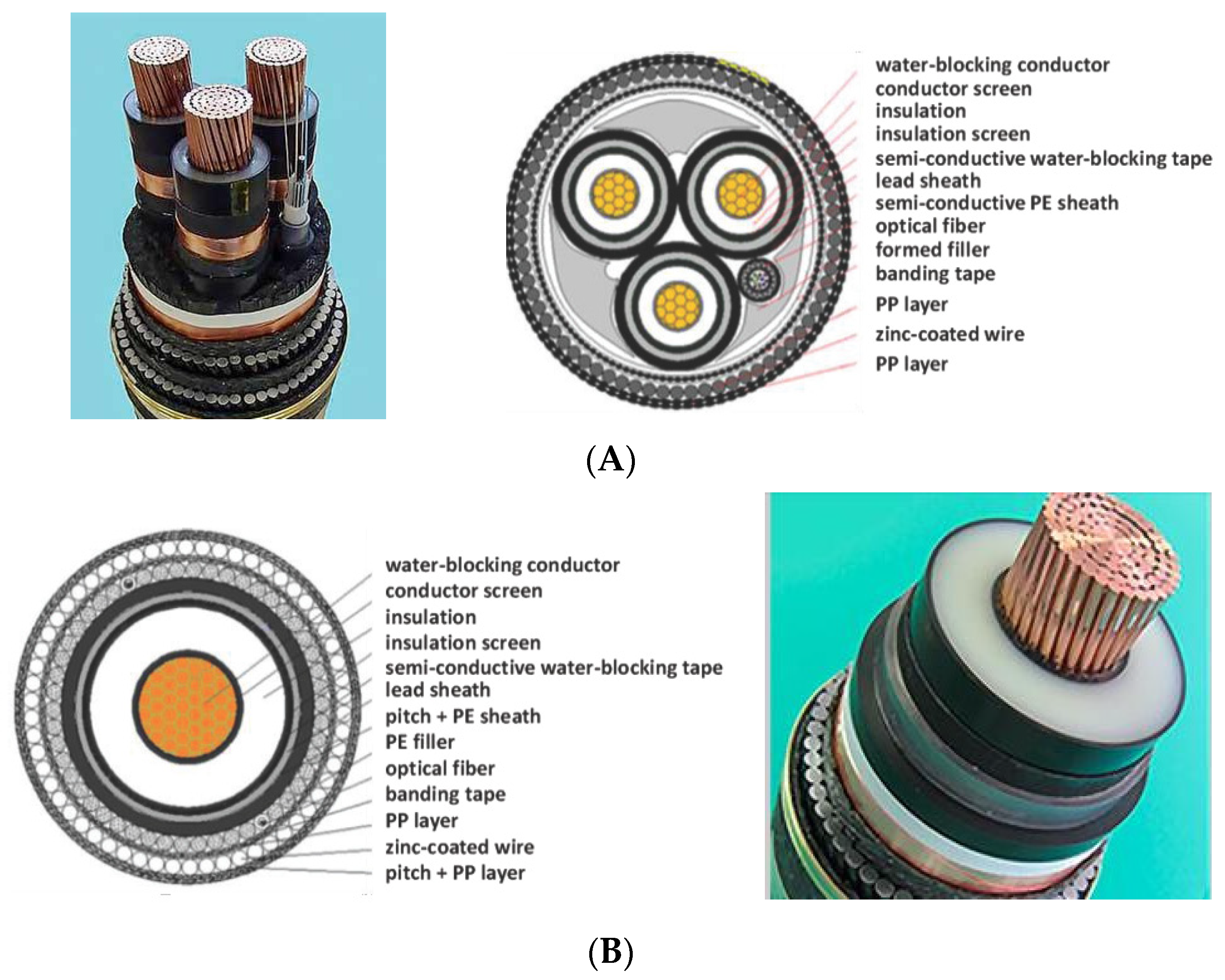A Review on the Role of Crosslinked Polymers in Renewable Energy: Complex Network Analysis of Innovations in Sustainability
Abstract
1. Introduction
2. Reviewing Methodology
2.1. Citation Network as an Approximated Knowledge Map
2.2. Network Construction Methodology
3. Discussion
3.1. General Overview
3.2. Generation
Wind Turbine Blades
3.3. Transmission
3.3.1. Current Use of XLPE in Transmission Cables
3.3.2. Performance Enhancements and Lifespan Extension
3.3.3. Recycling Strategies for XLPE
3.3.4. Innovative Alternatives to the Use of XLPE
3.4. Other Applications
3.4.1. End-of-Life Challenges and Recycling of Battery Components
3.4.2. Regulatory and Economic Considerations
4. Conclusions
Supplementary Materials
Funding
Data Availability Statement
Acknowledgments
Conflicts of Interest
References
- World Bank. Energy Overview: Development News, Research, Data. Available online: https://www.worldbank.org/en/topic/energy/overview (accessed on 16 May 2025).
- Renewable Energy—Powering a Safer Future. Available online: https://www.un.org/en/climatechange/raising-ambition/renewable-energy (accessed on 16 May 2025).
- Coddington, O.; Lean, J.L.; Pilewskie, P.; Snow, M.; Lindholm, D. A Solar Irradiance Climate Data Record. Bull. Am. Meteorol. Soc. 2016, 97, 1265–1282. [Google Scholar] [CrossRef]
- Betz, A. Introduction to the Theory of Flow Machines; Elsevier Science: Burlington, NJ, USA, 2014; ISBN 978-1-4831-8090-8. [Google Scholar]
- International Energy Agency. Renewables 2024. Analysis and Forecast to 2030; International Energy Agency: Paris, France, 2024. [Google Scholar]
- Global Wind Energy Council. GWEC|GLOBAL WIND REPORT 2024; GWEC: Lisbon, Portugal, 2024. [Google Scholar]
- Liu, P.; Barlow, C.Y. The Environmental Impact of Wind Turbine Blades. IOP Conf. Ser. Mater. Sci. Eng. 2016, 139, 012032. [Google Scholar] [CrossRef]
- Psomopoulos, C.S.; Kalkanis, K.; Kaminaris, S.; Ioannidis, G.C.; Pachos, P. A Review of the Potential for the Recovery of Wind Turbine Blade Waste Materials. Recycling 2019, 4, 7. [Google Scholar] [CrossRef]
- Buder, I. Desertec. In Encyclopedia of Sustainable Management; Idowu, S.O., Schmidpeter, R., Capaldi, N., Zu, L., Del Baldo, M., Abreu, R., Eds.; Springer International Publishing: Cham, Switzerland, 2023; pp. 1128–1133. ISBN 978-3-031-25983-8. [Google Scholar]
- Sustainable Electricity Grids: Council Approves Conclusions. Available online: https://www.consilium.europa.eu/en/press/press-releases/2024/05/30/sustainable-electricity-grids-council-approves-conclusions/ (accessed on 16 May 2025).
- Miccio, L.A.; Gámez-Pérez, C.; Suárez, J.L.; Schwartz, G.A. Mapping The Networked Context of Copernicus, Michelangelo, and Della Mirandola in Wikipedia. Advs. Complex. Syst. 2022, 25, 2240010. [Google Scholar] [CrossRef]
- Miccio, L.A.; Agapitos, P.; Gamez-Perez, C.; González, F.; Suarez, J.L.; Schwartz, G.A. Wikipedia as a Cultural Lens: A Quantitative Approach for Exploring Cultural Networks. Humanit. Soc. Sci. Commun. 2025, 12, 462. [Google Scholar] [CrossRef]
- Schwartz, G.A. Complex Networks Reveal Emergent Interdisciplinary Knowledge in Wikipedia. Humanit. Soc. Sci. Commun. 2021, 8, 127. [Google Scholar] [CrossRef]
- Smedberg, A.; Hjertberg, T.; Gustafsson, B. Crosslinking Reactions in an Unsaturated Low Density Polyethylene. Polymer 1997, 38, 4127–4138. [Google Scholar] [CrossRef]
- Andrews, T.; Hampton, R.N.; Smedberg, A.; Wald, D.; Waschk, V.; Weissenberg, W. The Role of Degassing in XLPE Power Cable Manufacture. IEEE Electr. Insul. Mag. 2006, 22, 5–16. [Google Scholar] [CrossRef]
- Zhang, L.; Peixoto, T.P. Statistical Inference of Assortative Community Structures. Phys. Rev. Res. 2020, 2, 043271. [Google Scholar] [CrossRef]
- Peixoto, T.P. Bayesian Stochastic Blockmodeling. In Advances in Network Clustering and Blockmodeling; Doreian, P., Batagelj, V., Ferligoj, A., Eds.; Wiley: Hoboken, NJ, USA, 2019; pp. 289–332. ISBN 978-1-119-22470-9. [Google Scholar]
- Brandes, U. A Faster Algorithm for Betweenness Centrality*. J. Math. Sociol. 2001, 25, 163–177. [Google Scholar] [CrossRef]
- Page, L.; Brin, S.; Motwania, R.; Winograd, T. The PageRank Citation Ranking: Bringing Order to the Web. In Proceedings of the Web Conference, Toronto, ON, Canada, 11–14 May 1999. [Google Scholar]
- Mishnaevsky, L.; Branner, K.; Petersen, H.; Beauson, J.; McGugan, M.; Sørensen, B. Materials for Wind Turbine Blades: An Overview. Materials 2017, 10, 1285. [Google Scholar] [CrossRef]
- Tazi, N.; Kim, J.; Bouzidi, Y.; Chatelet, E.; Liu, G. Waste and Material Flow Analysis in the End-of-Life Wind Energy System. Resour. Conserv. Recycl. 2019, 145, 199–207. [Google Scholar] [CrossRef]
- Martini, R.; Xydis, G. Repurposing and Recycling Wind Turbine Blades in the United States. Env. Prog. Sustain. Energy 2023, 42, e13932. [Google Scholar] [CrossRef]
- Mishnaevsky, L., Jr. Recycling of Wind Turbine Blades: Recent Developments. Curr. Opin. Green Sustain. Chem. 2023, 39, 100746. [Google Scholar] [CrossRef]
- Wu, M.-S.; Jin, B.C.; Li, X.; Nutt, S. A Recyclable Epoxy for Composite Wind Turbine Blades. Adv. Manuf. Polym. Compos. Sci. 2019, 5, 114–127. [Google Scholar] [CrossRef]
- Andritsch, T.; Vaughan, A.; Stevens, G.C. Novel Insulation Materials for High Voltage Cable Systems. IEEE Electr. Insul. Mag. 2017, 33, 27–33. [Google Scholar] [CrossRef]
- Hosier, I.L.; Cozzarini, L.; Vaughan, A.S.; Swingler, S.G. Propylene Based Systems for High Voltage Cable Insulation Applications. J. Phys. Conf. Ser. 2009, 183, 012015. [Google Scholar] [CrossRef]
- Taynton, P.; Yu, K.; Shoemaker, R.K.; Jin, Y.; Qi, H.J.; Zhang, W. Heat- or Water-Driven Malleability in a Highly Recyclable Covalent Network Polymer. Adv. Mater. 2014, 26, 3938–3942. [Google Scholar] [CrossRef]
- Taynton, P.; Ni, H.; Zhu, C.; Yu, K.; Loob, S.; Jin, Y.; Qi, H.J.; Zhang, W. Repairable Woven Carbon Fiber Composites with Full Recyclability Enabled by Malleable Polyimine Networks. Adv. Mater. 2016, 28, 2904–2909. [Google Scholar] [CrossRef]
- Yu, K.; Shi, Q.; Dunn, M.L.; Wang, T.; Qi, H.J. Carbon Fiber Reinforced Thermoset Composite with Near 100% Recyclability. Adv. Funct. Mater. 2016, 26, 6098–6106. [Google Scholar] [CrossRef]
- Pimenta, S.; Pinho, S.T. Recycling Carbon Fibre Reinforced Polymers for Structural Applications: Technology Review and Market Outlook. Waste Manag. 2011, 31, 378–392. [Google Scholar] [CrossRef] [PubMed]
- Oliveux, G.; Dandy, L.O.; Leeke, G.A. Current Status of Recycling of Fibre Reinforced Polymers: Review of Technologies, Reuse and Resulting Properties. Prog. Mater. Sci. 2015, 72, 61–99. [Google Scholar] [CrossRef]
- De Fazio, D.; Boccarusso, L.; Formisano, A.; Viscusi, A.; Durante, M. A Review on the Recycling Technologies of Fibre-Reinforced Plastic (FRP) Materials Used in Industrial Fields. J. Mar. Sci. Eng. 2023, 11, 851. [Google Scholar] [CrossRef]
- Hanley, T.L.; Burford, R.P.; Fleming, R.J.; Barber, K.W. A General Review of Polymeric Insulation for Use in HVDC Cables. IEEE Electr. Insul. Mag. 2003, 19, 13–24. [Google Scholar] [CrossRef]
- Mazzanti, G.; Marzinotto, M. Introduction. In Extruded Cables For High-Voltage Direct-Current Transmission; Mazzanti, G., Marzinotto, M., Eds.; Wiley: Hoboken, NJ, USA, 2013; pp. 1–10. ISBN 978-1-118-09666-6. [Google Scholar]
- Thomas, J.; Joseph, B.; Jose, J.P.; Maria, H.J.; Main, P.; Ali Rahman, A.; Francis, B.; Ahmad, Z.; Thomas, S. Recent Advances in Cross-Linked Polyethylene-Based Nanocomposites for High Voltage Engineering Applications: A Critical Review. Ind. Eng. Chem. Res. 2019, 58, 20863–20879. [Google Scholar] [CrossRef]
- Sekii, Y. Charge Generation and Electrical Degradation of Cross-linked Polyethylene. IEEE J. Trans. Elec. Engng. 2019, 14, 4–15. [Google Scholar] [CrossRef]
- Diban, B.; Mazzanti, G.; Seri, P.; Paajanen, M.; Rytöluoto, I.; Saarimäki, E.; Lahti, K.; Niittymäki, M.; Mourad, M.; Leproux, A.; et al. Characterization of Isotactic-Polypropylene-Based Compounds for HVDC Cable Insulation. In Proceedings of the 2024 IEEE 5th International Conference on Dielectrics (ICD), Toulouse, France, 30 June–4 July 2024; IEEE: Toulouse, France, 2024; pp. 1–4. [Google Scholar]
- Hu, S.; Zhang, W.; Wang, W.; Li, J.; Shao, Q.; Zhang, Y.; Zhang, Q.; Huang, S.; Hu, J.; Li, Q.; et al. Comprehensive Comparisons of Grafting-Modified Different Polypropylene as HVDC Cable Insulation Material. IEEE Trans. Dielect. Electr. Insul. 2022, 29, 1865–1872. [Google Scholar] [CrossRef]
- D’Auria, S.; Pourrahimi, A.M.; Favero, A.; Neuteboom, P.; Xu, X.; Haraguchi, S.; Bek, M.; Kádár, R.; Dalcanale, E.; Pinalli, R.; et al. Polyethylene Based Ionomers as High Voltage Insulation Materials. Adv. Funct. Mater. 2023, 33, 2301878. [Google Scholar] [CrossRef]
- Nga, V.T.T.; Teyssedre, G. Modelling of Insulation in DC Systems: The Challenges for HVDC Cables and Accessories. Vietnam. J. Sci. Technol. Eng. 2020, 62, 38–44. [Google Scholar] [CrossRef]
- Sumitomo Electric. High Voltage Cable. Available online: https://sumitomoelectric.com/products/high-voltage-cable (accessed on 16 May 2025).
- Liu, P.; Barlow, C.Y. Wind Turbine Blade Waste in 2050. Waste Manag. 2017, 62, 229–240. [Google Scholar] [CrossRef]
- Windeurope.org. How to Build a Circular Economy for Wind Turbine Blades Through Policy and Partnerships—A Position Paper. Available online: https://windeurope.org/wp-content/uploads/files/policy/position-papers/WindEurope-position-paper-how-to-build-a-circular-economy.pdf (accessed on 16 May 2025).
- Beauson, J.; Laurent, A.; Rudolph, D.P.; Pagh Jensen, J. The Complex End-of-Life of Wind Turbine Blades: A Review of the European Context. Renew. Sustain. Energy Rev. 2022, 155, 111847. [Google Scholar] [CrossRef]
- Bank, L.; Arias, F.; Yazdanbakhsh, A.; Gentry, T.; Al-Haddad, T.; Chen, J.-F.; Morrow, R. Concepts for Reusing Composite Materials from Decommissioned Wind Turbine Blades in Affordable Housing. Recycling 2018, 3, 3. [Google Scholar] [CrossRef]
- Ruane, K.; Soutsos, M.; Huynh, A.; Zhang, Z.; Nagle, A.; McDonald, K.; Gentry, T.R.; Leahy, P.; Bank, L.C. Construction and Cost Analysis of BladeBridges Made from Decommissioned FRP Wind Turbine Blades. Sustainability 2023, 15, 3366. [Google Scholar] [CrossRef]
- Tasistro-Hart, B.; Al-Haddad, T.; Bank, L.C.; Gentry, R. Reconstruction of Wind Turbine Blade Geometry and Internal Structure from Point Cloud Data. In Proceedings of the Computing in Civil Engineering 2019; American Society of Civil Engineers, Atlanta, GA, USA, 17–19 June 2019; pp. 130–137. [Google Scholar]
- De Simone, M.; Ungureanu, D.-V.; Campagna, D. Circular Economy of Wind Turbines Waste in Constructions and Cities. In 4th International Conference “Coordinating Engineering for Sustainability and Resilience” & Midterm Conference of CircularB “Implementation of Circular Economy in the Built Environment”; Lecture Notes in Civil Engineering; Ungureanu, V., Bragança, L., Baniotopoulos, C., Abdalla, K.M., Eds.; Springer Nature: Cham, Switzerland, 2024; Volume 489, pp. 592–602. ISBN 978-3-031-57799-4. [Google Scholar]
- Mishnaevsky, L. Sustainable End-of-Life Management of Wind Turbine Blades: Overview of Current and Coming Solutions. Materials 2021, 14, 1124. [Google Scholar] [CrossRef]
- Spini, F.; Bettini, P. End-of-Life Wind Turbine Blades: Review on Recycling Strategies. Compos. Part B Eng. 2024, 275, 111290. [Google Scholar] [CrossRef]
- Shen, Y.; Apraku, S.E.; Zhu, Y. Recycling and Recovery of Fiber-Reinforced Polymer Composites for End-of-Life Wind Turbine Blade Management. Green. Chem. 2023, 25, 9644–9658. [Google Scholar] [CrossRef]
- Rahimizadeh, A.; Kalman, J.; Fayazbakhsh, K.; Lessard, L. Recycling of Fiberglass Wind Turbine Blades into Reinforced Filaments for Use in Additive Manufacturing. Compos. Part B Eng. 2019, 175, 107101. [Google Scholar] [CrossRef]
- Sorte, S.; Martins, N.; Oliveira, M.S.A.; Vela, G.L.; Relvas, C. Unlocking the Potential of Wind Turbine Blade Recycling: Assessing Techniques and Metrics for Sustainability. Energies 2023, 16, 7624. [Google Scholar] [CrossRef]
- Onwudili, J.A.; Miskolczi, N.; Nagy, T.; Lipóczi, G. Recovery of Glass Fibre and Carbon Fibres from Reinforced Thermosets by Batch Pyrolysis and Investigation of Fibre Re-Using as Reinforcement in LDPE Matrix. Compos. Part B Eng. 2016, 91, 154–161. [Google Scholar] [CrossRef]
- Ren, Y.; Xu, L.; Shang, X.; Shen, Z.; Fu, R.; Li, W.; Guo, L. Evaluation of Mechanical Properties and Pyrolysis Products of Carbon Fibers Recycled by Microwave Pyrolysis. ACS Omega 2022, 7, 13529–13537. [Google Scholar] [CrossRef]
- Rani, M.; Choudhary, P.; Krishnan, V.; Zafar, S. Development of Sustainable Microwave-Based Approach to Recover Glass Fibers for Wind Turbine Blades Composite Waste. Resour. Conserv. Recycl. 2022, 179, 106107. [Google Scholar] [CrossRef]
- Zhang, D.; Song, Q.; Hou, B.; Zhang, M.; Teng, D.; Zhang, Y.; Bie, R.; Yang, H. Experimental Study on Microwave Pyrolysis of Decommissioned Wind Turbine Blades Based on Silicon Carbide Absorbents. Processes 2024, 12, 1065. [Google Scholar] [CrossRef]
- Zhang, L.; Liu, W.; Jiang, H.; Zhang, X.; Shang, Y.; Jiang, C.; Wang, X.; Qi, G.; Li, B.; Xu, P.; et al. Upcycling of Carbon Fiber-Reinforced Polymer Composites. Compos. Sci. Technol. 2023, 231, 109824. [Google Scholar] [CrossRef]
- Liu, P.; Meng, F.; Barlow, C.Y. Wind Turbine Blade End-of-Life Options: An Eco-Audit Comparison. J. Clean. Prod. 2019, 212, 1268–1281. [Google Scholar] [CrossRef]
- Mativenga, P.T.; Shuaib, N.A.; Howarth, J.; Pestalozzi, F.; Woidasky, J. High Voltage Fragmentation and Mechanical Recycling of Glass Fibre Thermoset Composite. CIRP Ann. 2016, 65, 45–48. [Google Scholar] [CrossRef]
- Mattsson, C.; André, A.; Juntikka, M.; Tränkle, T.; Sott, R. Chemical Recycling of End-of-Life Wind Turbine Blades by Solvolysis/HTL. IOP Conf. Ser. Mater. Sci. Eng. 2020, 942, 012013. [Google Scholar] [CrossRef]
- Muzyka, R.; Sobek, S.; Korytkowska-Wałach, A.; Drewniak, Ł.; Sajdak, M. Recycling of Both Resin and Fibre from Wind Turbine Blade Waste via Small Molecule-Assisted Dissolution. Sci. Rep. 2023, 13, 9270. [Google Scholar] [CrossRef]
- Khalil, Y.F. Sustainability Assessment of Solvolysis Using Supercritical Fluids for Carbon Fiber Reinforced Polymers Waste Management. Sustain. Prod. Consum. 2019, 17, 74–84. [Google Scholar] [CrossRef]
- Sokoli, H.U.; Beauson, J.; Simonsen, M.E.; Fraisse, A.; Brøndsted, P.; Søgaard, E.G. Optimized Process for Recovery of Glass- and Carbon Fibers with Retained Mechanical Properties by Means of near- and Supercritical Fluids. J. Supercrit. Fluids 2017, 124, 80–89. [Google Scholar] [CrossRef]
- Manarin, E.; Boumezgane, O.; Giannino, A.; De Fabritiis, V.; Griffini, G.; Turri, S. Towards a Zero-Waste Chemcycling of Thermoset Polymer Composites: Catalyst Assisted Mild Solvolysis for Clean Carbon Fiber Liberation and Circular Coating Development. Sustain. Mater. Technol. 2024, 41, e01031. [Google Scholar] [CrossRef]
- Mishnaevsky, L.; Thomsen, K. Costs of Repair of Wind Turbine Blades: Influence of Technology Aspects. Wind. Energy 2020, 23, 2247–2255. [Google Scholar] [CrossRef]
- Zhao, W.; An, L.; Wang, S. Recyclable High-Performance Epoxy-Anhydride Resins with DMP-30 as the Catalyst of Transesterification Reactions. Polymers 2021, 13, 296. [Google Scholar] [CrossRef]
- Liu, B.; Cao, Q.; Li, J.; Jian, X.; Weng, Z. Facile Recycling of Anhydride-Cured Epoxy Thermoset under Mild Conditions with Multifunctional Hydrazine Hydrate. Chin. Chem. Lett. 2023, 34, 108465. [Google Scholar] [CrossRef]
- Martinez-Marquez, D.; Florin, N.; Hall, W.; Majewski, P.; Wang, H.; Stewart, R.A. State-of-the-Art Review of Product Stewardship Strategies for Large Composite Wind Turbine Blades. Resour. Conserv. Recycl. Adv. 2022, 15, 200109. [Google Scholar] [CrossRef]
- Chen, J.; Wang, J.; Ni, A. Recycling and Reuse of Composite Materials for Wind Turbine Blades: An Overview. J. Reinf. Plast. Compos. 2019, 38, 567–577. [Google Scholar] [CrossRef]
- Blaiszik, B.J.; Kramer, S.L.B.; Olugebefola, S.C.; Moore, J.S.; Sottos, N.R.; White, S.R. Self-Healing Polymers and Composites. Annu. Rev. Mater. Res. 2010, 40, 179–211. [Google Scholar] [CrossRef]
- White, S.R.; Sottos, N.R.; Geubelle, P.H.; Moore, J.S.; Kessler, M.R.; Sriram, S.R.; Brown, E.N.; Viswanathan, S. Autonomic Healing of Polymer Composites. Nature 2001, 409, 794–797. [Google Scholar] [CrossRef]
- Toohey, K.S.; Sottos, N.R.; Lewis, J.A.; Moore, J.S.; White, S.R. Self-Healing Materials with Microvascular Networks. Nat. Mater. 2007, 6, 581–585. [Google Scholar] [CrossRef]
- Wu, D.Y.; Meure, S.; Solomon, D. Self-Healing Polymeric Materials: A Review of Recent Developments. Prog. Polym. Sci. 2008, 33, 479–522. [Google Scholar] [CrossRef]
- Billiet, S.; Hillewaere, X.K.D.; Teixeira, R.F.A.; Du Prez, F.E. Chemistry of Crosslinking Processes for Self-Healing Polymers. Macromol. Rapid Commun. 2013, 34, 290–309. [Google Scholar] [CrossRef]
- Kloxin, C.J.; Bowman, C.N. Covalent Adaptable Networks: Smart, Reconfigurable and Responsive Network Systems. Chem. Soc. Rev. 2013, 42, 7161–7173. [Google Scholar] [CrossRef] [PubMed]
- Chakma, P.; Konkolewicz, D. Dynamic Covalent Bonds in Polymeric Materials. Angew. Chem. Int. Ed. 2019, 58, 9682–9695. [Google Scholar] [CrossRef]
- Roy, N.; Bruchmann, B.; Lehn, J.-M. DYNAMERS: Dynamic Polymers as Self-Healing Materials. Chem. Soc. Rev. 2015, 44, 3786–3807. [Google Scholar] [CrossRef]
- Podgórski, M.; Fairbanks, B.D.; Kirkpatrick, B.E.; McBride, M.; Martinez, A.; Dobson, A.; Bongiardina, N.J.; Bowman, C.N. Toward Stimuli-Responsive Dynamic Thermosets through Continuous Development and Improvements in Covalent Adaptable Networks (CANs). Adv. Mater. 2020, 32, 1906876. [Google Scholar] [CrossRef]
- Elling, B.R.; Dichtel, W.R. Reprocessable Cross-Linked Polymer Networks: Are Associative Exchange Mechanisms Desirable? ACS Cent. Sci. 2020, 6, 1488–1496. [Google Scholar] [CrossRef]
- Bowman, C.N.; Kloxin, C.J. Covalent Adaptable Networks: Reversible Bond Structures Incorporated in Polymer Networks. Angew. Chem. Int. Ed. 2012, 51, 4272–4274. [Google Scholar] [CrossRef]
- Montarnal, D.; Capelot, M.; Tournilhac, F.; Leibler, L. Silica-Like Malleable Materials from Permanent Organic Networks. Science 2011, 334, 965–968. [Google Scholar] [CrossRef]
- Capelot, M.; Unterlass, M.M.; Tournilhac, F.; Leibler, L. Catalytic Control of the Vitrimer Glass Transition. ACS Macro Lett. 2012, 789–792. [Google Scholar] [CrossRef]
- Chabert, E.; Vial, J.; Cauchois, J.-P.; Mihaluta, M.; Tournilhac, F. Multiple Welding of Long Fiber Epoxy Vitrimer Composites. Soft Matter 2016, 12, 4838–4845. [Google Scholar] [CrossRef]
- Xu, Y.; Dai, F.; Zhang, H.; Zhang, J.; Liao, S.; Huang, M.; Wang, P.; Chen, Y.; Wang, Z.; Chen, S. High Tg Catalyst-Free Self-Healing Vitrimer Derived from Turpentine and Its Application in Glass Fiber Reinforced Composites. Ind. Crops Prod. 2025, 225, 120596. [Google Scholar] [CrossRef]
- Amfilochiou, V.; Debsharma, T.; De Baere, I.; Daelemans, L.; Du Prez, F.; Van Paepegem, W. Thermomechanical Characterisation of Reprocessable, Siloxane-Based, Glass-Fibre-Reinforced Vitrimers. Compos. Part B Eng. 2024, 276, 111354. [Google Scholar] [CrossRef]
- Amfilochiou, V.; Debsharma, T.; De Baere, I.; Du Prez, F.; Van Paepegem, W. Interlaminar Fracture Toughness Behaviour of a Repairable Glass-Fibre-Reinforced Vitrimer for Wind-Energy Applications. Compos. Part B Eng. 2025, 291, 112023. [Google Scholar] [CrossRef]
- Altuna, F.I.; Antonacci, J.; Arenas, G.F.; Pettarin, V.; Hoppe, C.E.; Williams, R.J.J. Photothermal Triggering of Self-Healing Processes Applied to the Reparation of Bio-Based Polymer Networks. Mater. Res. Express 2016, 3, 045003. [Google Scholar] [CrossRef]
- Sharma, H.; Kumar, A.; Rana, S.; Guadagno, L. An Overview on Carbon Fiber-Reinforced Epoxy Composites: Effect of Graphene Oxide Incorporation on Composites Performance. Polymers 2022, 14, 1548. [Google Scholar] [CrossRef]
- Biron, M. Thermosets and Composites: Material Selection, Applications, Manufacturing, and Cost Analysis, 2nd ed.; PDL Handbook Series; Elsevier: Oxford, UK, 2014; ISBN 978-1-4557-3125-1. [Google Scholar]
- Das, A.D.; Mannoni, G.; Früh, A.E.; Orsi, D.; Pinalli, R.; Dalcanale, E. Damage-Reporting Carbon Fiber Epoxy Composites. ACS Appl. Polym. Mater. 2019, 1, 2990–2997. [Google Scholar] [CrossRef]
- Kumar, V.; Kuang, W.; Fifield, L.S. Carbon Fiber-Based Vitrimer Composites: A Path toward Current Research That Is High-Performing, Useful, and Sustainable. Materials 2024, 17, 3265. [Google Scholar] [CrossRef]
- Chuangchote, S.; Nukunudompanich, M. Self-Healing Carbon Fiber–Reinforced Polymers for Aerospace Applications. In Aerospace Polymeric Materials; Inamuddin, D., Altalhi, T., Adnan, S.M., Eds.; Wiley: Hoboken, NJ, USA, 2022; pp. 85–115. ISBN 978-1-119-90489-2. [Google Scholar]
- Ahrens, A.; Bonde, A.; Sun, H.; Wittig, N.K.; Hammershøj, H.C.D.; Batista, G.M.F.; Sommerfeldt, A.; Frølich, S.; Birkedal, H.; Skrydstrup, T. Catalytic Disconnection of C–O Bonds in Epoxy Resins and Composites. Nature 2023, 617, 730–737. [Google Scholar] [CrossRef]
- Cai, S.; Zhang, X.; Wang, Z.; Xia, H. Carbon Fiber-Reinforced Dynamically Cross-Linked Epoxy Resin Composites with Excellent Self-Healing and Recycling Performance via Autocatalyzed β—Hydroxyl Ester Bonds. Ind. Eng. Chem. Res. 2025, 64, 369–381. [Google Scholar] [CrossRef]
- Altuna, F.I.; Hoppe, C.E.; Williams, R.J.J. Epoxy Vitrimers with a Covalently Bonded Tertiary Amine as Catalyst of the Transesterification Reaction. Eur. Polym. J. 2019, 113, 297–304. [Google Scholar] [CrossRef]
- Van Lijsebetten, F.; Holloway, J.O.; Winne, J.M.; Du Prez, F.E. Internal Catalysis for Dynamic Covalent Chemistry Applications and Polymer Science. Chem. Soc. Rev. 2020, 49, 8425–8438. [Google Scholar] [CrossRef]
- Schenk, V.; De Calbiac, J.; D’Elia, R.; Olivier, P.; Labastie, K.; Destarac, M.; Guerre, M. Epoxy Vitrimer Formulation for Resin Transfer Molding: Reactivity, Process, and Material Characterization. ACS Appl. Polym. Mater. 2024, 6, 6087–6095. [Google Scholar] [CrossRef]
- Arano, F.M.; Casado, U.; Ferrero, I.Z.; Rivera, J.; Churruca, M.J.; Altuna, F.I.; Rodríguez, E.S.; Hoppe, C.E.; Williams, R.J.J. Self-Healing of Microcracks and Scratches in a Carbon-Fiber Reinforced Epoxy Vitrimer by Conventional or Remote Heating. ACS Appl. Mater. Interfaces 2024, 17, 13170–13178. [Google Scholar] [CrossRef]
- Fan, X.; Zheng, J.; Yeo, J.C.C.; Wang, S.; Li, K.; Muiruri, J.K.; Hadjichristidis, N.; Li, Z. Dynamic Covalent Bonds Enabled Carbon Fiber Reinforced Polymers Recyclability and Material Circularity. Angew. Chem. 2024, 136, e202408969. [Google Scholar] [CrossRef]
- La Rosa, A.; Blanco, I.; Banatao, D.; Pastine, S.; Björklund, A.; Cicala, G. Innovative Chemical Process for Recycling Thermosets Cured with Recyclamines® by Converting Bio-Epoxy Composites in Reusable Thermoplastic—An LCA Study. Materials 2018, 11, 353. [Google Scholar] [CrossRef]
- Ferrari, F.; Esposito Corcione, C.; Striani, R.; Saitta, L.; Cicala, G.; Greco, A. Fully Recyclable Bio-Based Epoxy Formulations Using Epoxidized Precursors from Waste Flour: Thermal and Mechanical Characterization. Polymers 2021, 13, 2768. [Google Scholar] [CrossRef]
- Schenk, V.; Labastie, K.; Destarac, M.; Olivier, P.; Guerre, M. Vitrimer Composites: Current Status and Future Challenges. Mater. Adv. 2022, 3, 8012–8029. [Google Scholar] [CrossRef]
- Post, W.; Susa, A.; Blaauw, R.; Molenveld, K.; Knoop, R.J.I. A Review on the Potential and Limitations of Recyclable Thermosets for Structural Applications. Polym. Rev. 2020, 60, 359–388. [Google Scholar] [CrossRef]
- Xing, Y.; Ren, C.; Xu, X. Offshore Wind Turbine Technologies: Last 10 Years and Future Trends. In The Palgrave Handbook of Cybersecurity, Technologies and Energy Transitions; Palgrave Studies in Energy Transitions; Barichella, A., Yada, J., Eds.; Springer Nature: Cham, Switzerland, 2024; pp. 1–43. ISBN 978-3-031-04196-9. [Google Scholar]
- The World’s First Wooden Wind Turbine Blades Are Now Installed in Germany—Voodin Blade Technology Is on a Mission to Make Wind Energy Even More Sustainable. Available online: https://news.cision.com/san-francisco-oy/r/the-world-s-first-wooden-wind-turbine-blades-are-now-installed-in-germany---voodin-blade-technology-,c3971825 (accessed on 16 May 2025).
- Cao, Z.; Wang, R.; Hao, L.; Jiao, W.; Yang, F.; Wang, Q.; Liu, W.; Zhang, B.; Lu, X.; He, X. Interfacial Healing of Carbon Fiber Composites in the Presence of Gold Nanoparticles as Localized “Nano-Heaters”. RSC Adv. 2015, 5, 5680–5685. [Google Scholar] [CrossRef]
- Cao, Z.; Wang, R.; Yang, F.; Hao, L.; Jiao, W.; Liu, W.; Wang, Q.; Zhang, B. Photothermal Healing of a Glass Fiber Reinforced Composite Interface by Gold Nanoparticles. RSC Adv. 2015, 5, 102167–102172. [Google Scholar] [CrossRef]
- Bao, Z.; Liu, X.; Liu, Y.; Liu, H.; Zhao, K. Near-Infrared Light-Responsive Inorganic Nanomaterials for Photothermal Therapy. Asian J. Pharm. Sci. 2016, 11, 349–364. [Google Scholar] [CrossRef]
- Zhao, P.; Cao, M.; Liu, C.; Dai, Y.; Tan, Y.; Ji, S.; Xu, H. Water-Enhanced and Remote Self-Healing Elastomers in Various Harsh Environments. ACS Appl. Mater. Interfaces 2022, 14, 27413–27420. [Google Scholar] [CrossRef]
- Gupta, R.; Gupta, P.; Footer, C.; Stenning, G.B.G.; Darr, J.A.; Pancholi, K. Tuneable Magnetic Nanocomposites for Remote Self-Healing. Sci. Rep. 2022, 12, 10180. [Google Scholar] [CrossRef]
- Wang, F.; Wang, W.; Zhang, C.; Tang, J.; Zeng, X.; Wan, X. Scalable Manufactured Bio-Based Polymer Nanocomposite with Instantaneous near-Infrared Light-Actuated Targeted Shape Memory and Remote-Controlled Accurate Self-Healing. Compos. Part B Eng. 2021, 219, 108927. [Google Scholar] [CrossRef]
- Lian, Y.; Lan, D.; Jiang, X.; Wang, L.; Yan, S.; Dong, Q.; Jiang, Y.; Gu, J.; Gao, Z.; Wu, G. Multifunctional Electromagnetic Wave Absorbing Carbon Fiber/Ti3C2TX MXene Fabric with Superior near-Infrared Laser Dependent Photothermal Antibacterial Behaviors. J. Colloid. Interface Sci. 2024, 676, 217–226. [Google Scholar] [CrossRef]
- Koo, B.; Nofen, E.; Chattopadhyay, A.; Dai, L. Dimeric Anthracene-Based Mechanophore for Damage Precursor Detection in Epoxy-Based Thermoset Polymer Matrix: Characterization and Atomistic Modeling. Comput. Mater. Sci. 2017, 133, 167–174. [Google Scholar] [CrossRef]
- Duchene, P.; Chaki, S.; Ayadi, A.; Krawczak, P. A Review of Non-Destructive Techniques Used for Mechanical Damage Assessment in Polymer Composites. J. Mater. Sci. 2018, 53, 7915–7938. [Google Scholar] [CrossRef]
- Pourrahimi, A.M.; Mauri, M.; D’Auria, S.; Pinalli, R.; Müller, C. Alternative Concepts for Extruded Power Cable Insulation: From Thermosets to Thermoplastics. Adv. Mater. 2024, 36, 2313508. [Google Scholar] [CrossRef]
- Pleşa, I.; Noţingher, P.; Schlögl, S.; Sumereder, C.; Muhr, M. Properties of Polymer Composites Used in High-Voltage Applications. Polymers 2016, 8, 173. [Google Scholar] [CrossRef]
- Pleşa, I.; Noţingher, P.V.; Stancu, C.; Wiesbrock, F.; Schlögl, S. Polyethylene Nanocomposites for Power Cable Insulations. Polymers 2018, 11, 24. [Google Scholar] [CrossRef]
- Mauri, M.; Peterson, A.; Senol, A.; Elamin, K.; Gitsas, A.; Hjertberg, T.; Matic, A.; Gkourmpis, T.; Prieto, O.; Müller, C. Byproduct-Free Curing of a Highly Insulating Polyethylene Copolymer Blend: An Alternative to Peroxide Crosslinking. J. Mater. Chem. C 2018, 6, 11292–11302. [Google Scholar] [CrossRef]
- Mauri, M.; Hofmann, A.I.; Gómez-Heincke, D.; Kumara, S.; Pourrahimi, A.M.; Ouyang, Y.; Hagstrand, P.; Gkourmpis, T.; Xu, X.; Prieto, O.; et al. Click Chemistry-type Crosslinking of a Low-conductivity Polyethylene Copolymer Ternary Blend for Power Cable Insulation. Polym. Int. 2020, 69, 404–412. [Google Scholar] [CrossRef]
- Watanabe, S.; Komura, K.; Nagaya, S.; Morita, H.; Nakamoto, T.; Hirai, S.; Aida, F. Development of Cross-Linked Polymer Material Recycling Technology by Supercritical Water. In Proceedings of the 7th International Conference on Properties and Applications of Dielectric Materials (Cat. No.03CH37417), Nagoya, Japan, 1–5 June 2003; IEEE: Nagoya, Japan, 2003; Volume 2, pp. 595–598. [Google Scholar]
- Selvin, M.; Shah, S.; Maria, H.J.; Thomas, S.; Tuladhar, R.; Jacob, M. Review on Recycling of Cross-Linked Polyethylene. Ind. Eng. Chem. Res. 2024, 63, 1200–1214. [Google Scholar] [CrossRef]
- Jin, K.; Li, L.; Torkelson, J.M. Recyclable Crosslinked Polymer Networks via One-Step Controlled Radical Polymerization. Adv. Mater. 2016, 28, 6746–6750. [Google Scholar] [CrossRef]
- Isayev, A.I.; Huang, K. Comparison between Decrosslinking of Crosslinked High and Low Density Polyethylenes via Ultrasonically Aided Extrusion. In Proceedings of the PPS-31: The 31st International Conference of the Polymer Processing Society–Conference Papers, Jeju Island, Korea, 7–11 June 2015; p. 030004. [Google Scholar]
- Deb, A.; Naskar, M. Recyclable Polymeric Cable Insulation Materials: A Comprehensive Review. Power Res. J. CPRI 2024, 113–122. [Google Scholar] [CrossRef]
- Andersson, M.G.; Hynynen, J.; Andersson, M.R.; Englund, V.; Hagstrand, P.-O.; Gkourmpis, T.; Müller, C. Highly Insulating Polyethylene Blends for High-Voltage Direct-Current Power Cables. ACS Macro Lett. 2017, 6, 78–82. [Google Scholar] [CrossRef]
- Lee, J.S.; Cho, K.C.; Ku, K.H.; Clio, G.; Lee, J.-H. Recyclable Insulation Material Based on Polyethylene for Power Cable. In Proceedings of the 2012 IEEE International Conference on Condition Monitoring and Diagnosis, Bali, Indonesia, 23–27 September 2012; IEEE: Bali, Indonesia, 2012; pp. 88–90. [Google Scholar]
- Ouyang, Y.; Mauri, M.; Pourrahimi, A.M.; Östergren, I.; Lund, A.; Gkourmpis, T.; Prieto, O.; Xu, X.; Hagstrand, P.-O.; Müller, C. Recyclable Polyethylene Insulation via Reactive Compounding with a Maleic Anhydride-Grafted Polypropylene. ACS Appl. Polym. Mater. 2020, 2, 2389–2396. [Google Scholar] [CrossRef]
- Green, C.D.; Vaughan, A.S.; Stevens, G.C.; Sutton, S.J.; Geussens, T.; Fairhurst, M.J. Recyclable Power Cable Comprising a Blend of Slow-Crystallized Polyethylenes. IEEE Trans. Dielect. Electr. Insul. 2013, 20, 1–9. [Google Scholar] [CrossRef]
- Green, C.D.; Alun Vaughan, G.C.; Stevens, S.J. Suton Electrical and Mechanical Properties of New Recyclable Power Cable Insulation Materials Based upon Polyethylene Blends. In Proceedings of the 17th International Symposium on High Voltage Engineering, Hannover, Germany, 22–26 August 2011. [Google Scholar]
- Hagstrand, P.-O.; Gkourmpis, T.; Müller, C.; Ouyang, Y. Polymer Composition for Cable Insulation. European Patent EP3739001B1, 18 November 2020. [Google Scholar]
- Jia, T.; Wang, R.; Zhang, M.; Ren, C.; Yang, Y.; Wang, J.; Yang, Y. A Short Review on Polyethylene-Based Ionomers: Synthesis, Structure, and Applications. Chem. Bio. Eng. 2024, 2, 156–170. [Google Scholar] [CrossRef]
- Suh, K.S.; Hwang, S.J.; Lee, C.R. Charge Behavior in Polyethylene-Ionomer Blends. IEEE Trans. Dielect. Electr. Insul. 1997, 4, 58–63. [Google Scholar] [CrossRef]
- Saal, A.; Hagemann, T.; Schubert, U.S. Polymers for Battery Applications—Active Materials, Membranes, and Binders. Adv. Energy Mater. 2021, 11, 2001984. [Google Scholar] [CrossRef]
- Hsu, C.-H.; Chien, L.-H.; Kuo, P.-L. High Thermal and Electrochemical Stability of a SiO2 Nanoparticle Hybird–Polyether Cross-Linked Membrane for Safety Reinforced Lithium-Ion Batteries. RSC Adv. 2016, 6, 18089–18095. [Google Scholar] [CrossRef]
- Lu, Z.; Sui, F.; Miao, Y.-E.; Liu, G.; Li, C.; Dong, W.; Cui, J.; Liu, T.; Wu, J.; Yang, C. Polyimide Separators for Rechargeable Batteries. J. Energy Chem. 2021, 58, 170–197. [Google Scholar] [CrossRef]
- Deng, J.; Xie, J.; Zhang, G.; Yang, X. Research Progress of Cross-Linked Fiber Membranes for Lithium-Ion Battery Separators. Chem. Eng. Sci. 2023, 280, 118970. [Google Scholar] [CrossRef]
- Xiao, Q.; Deng, C.; Wang, Q.; Zhang, Q.; Yue, Y.; Ren, S. In Situ Cross-Linked Gel Polymer Electrolyte Membranes with Excellent Thermal Stability for Lithium Ion Batteries. ACS Omega 2019, 4, 95–103. [Google Scholar] [CrossRef]
- Hsu, C.-Y.; Liu, R.-J.; Hsu, C.-H.; Kuo, P.-L. High Thermal and Electrochemical Stability of PVDF-Graft-PAN Copolymer Hybrid PEO Membrane for Safety Reinforced Lithium-Ion Battery. RSC Adv. 2016, 6, 18082–18088. [Google Scholar] [CrossRef]
- Golmohammadzadeh, R.; Faraji, F.; Jong, B.; Pozo-Gonzalo, C.; Banerjee, P.C. Current Challenges and Future Opportunities toward Recycling of Spent Lithium-Ion Batteries. Renew. Sustain. Energy Rev. 2022, 159, 112202. [Google Scholar] [CrossRef]
- Jeong, D.; Kwon, D.; Won, G.; Kim, S.; Bang, J.; Shim, J. Toward Sustainable Polymer Materials for Rechargeable Batteries: Utilizing Natural Feedstocks and Recycling/Upcycling of Polymer Waste. ChemSusChem 2024, 17, e202401010. [Google Scholar] [CrossRef]
- Fan, E.; Li, L.; Wang, Z.; Lin, J.; Huang, Y.; Yao, Y.; Chen, R.; Wu, F. Sustainable Recycling Technology for Li-Ion Batteries and Beyond: Challenges and Future Prospects. Chem. Rev. 2020, 120, 7020–7063. [Google Scholar] [CrossRef]
- Fortman, D.J.; Brutman, J.P.; De Hoe, G.X.; Snyder, R.L.; Dichtel, W.R.; Hillmyer, M.A. Approaches to Sustainable and Continually Recyclable Cross-Linked Polymers. ACS Sustain. Chem. Eng. 2018, 6, 11145–11159. [Google Scholar] [CrossRef]
- Or, T.; Gourley, S.W.D.; Kaliyappan, K.; Yu, A.; Chen, Z. Recycling of Mixed Cathode Lithium-ion Batteries for Electric Vehicles: Current Status and Future Outlook. Carbon. Energy 2020, 2, 6–43. [Google Scholar] [CrossRef]
- Chitre, A.; Freake, D.; Lander, L.; Edge, J.; Titirici, M. Towards a More Sustainable Lithium-Ion Battery Future: Recycling LIBs from Electric Vehicles. Batter. Supercaps 2020, 3, 1126–1136. [Google Scholar] [CrossRef]
- Chen, M.; Ma, X.; Chen, B.; Arsenault, R.; Karlson, P.; Simon, N.; Wang, Y. Recycling End-of-Life Electric Vehicle Lithium-Ion Batteries. Joule 2019, 3, 2622–2646. [Google Scholar] [CrossRef]
- Lima, M.C.C.; Pontes, L.P.; Vasconcelos, A.S.M.; De Araujo Silva Junior, W.; Wu, K. Economic Aspects for Recycling of Used Lithium-Ion Batteries from Electric Vehicles. Energies 2022, 15, 2203. [Google Scholar] [CrossRef]
- Alipanah, M.; Saha, A.K.; Vahidi, E.; Jin, H. Value Recovery from Spent Lithium-Ion Batteries: A Review on Technologies, Environmental Impacts, Economics, and Supply Chain. Clean Technol. Recycl. 2021, 1, 152–184. [Google Scholar] [CrossRef]
- Yang, Y.; Okonkwo, E.G.; Huang, G.; Xu, S.; Sun, W.; He, Y. On the Sustainability of Lithium Ion Battery Industry—A Review and Perspective. Energy Storage Mater. 2021, 36, 186–212. [Google Scholar] [CrossRef]
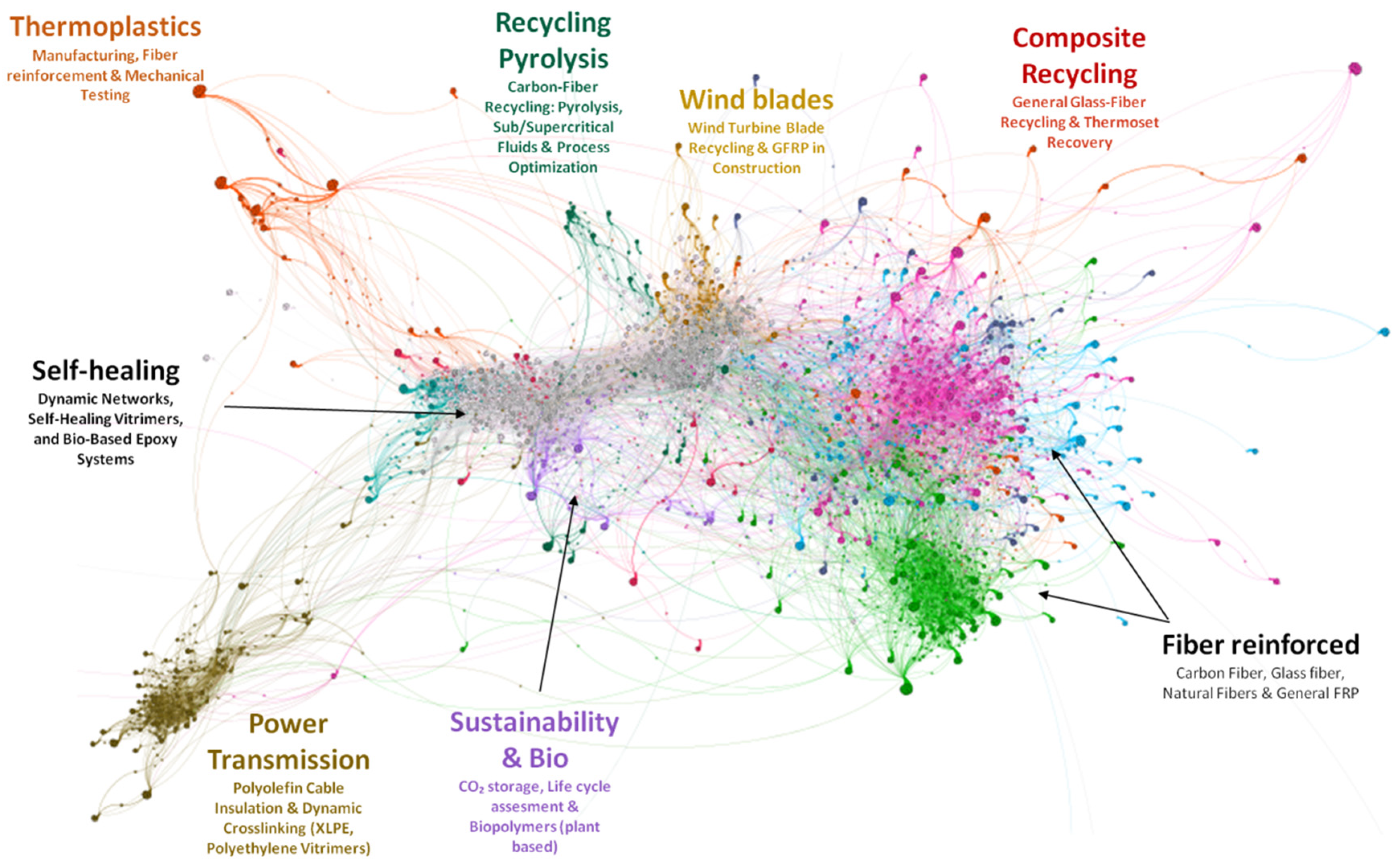

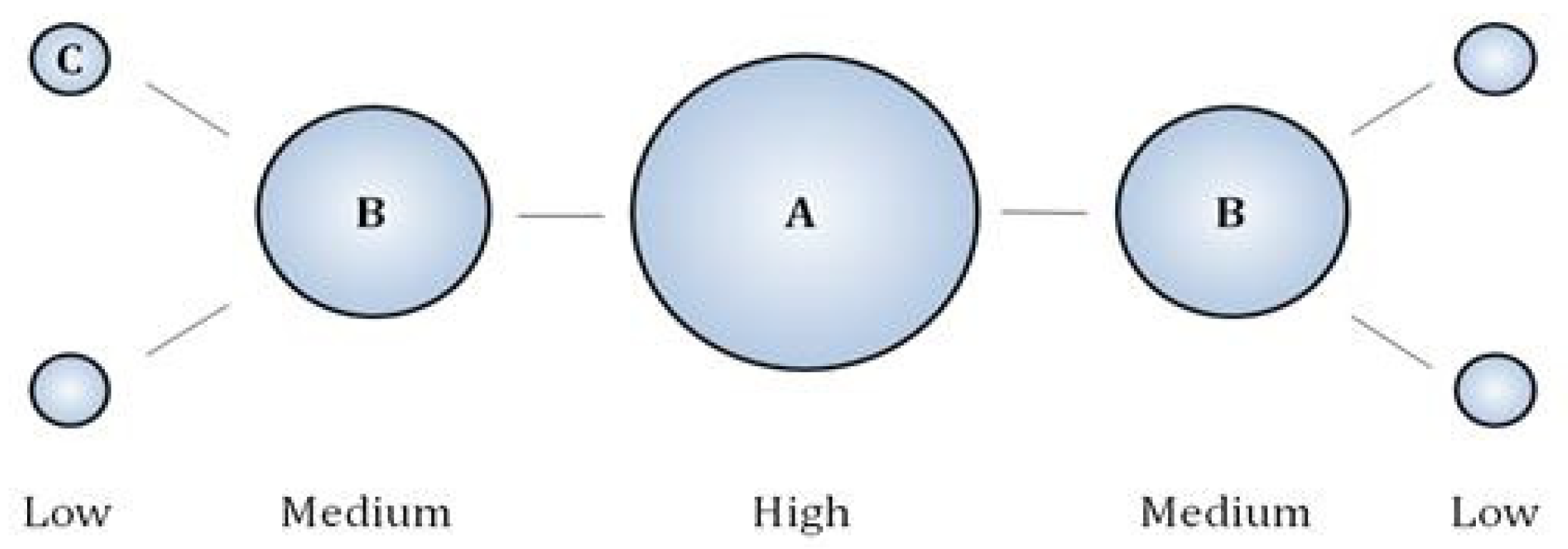
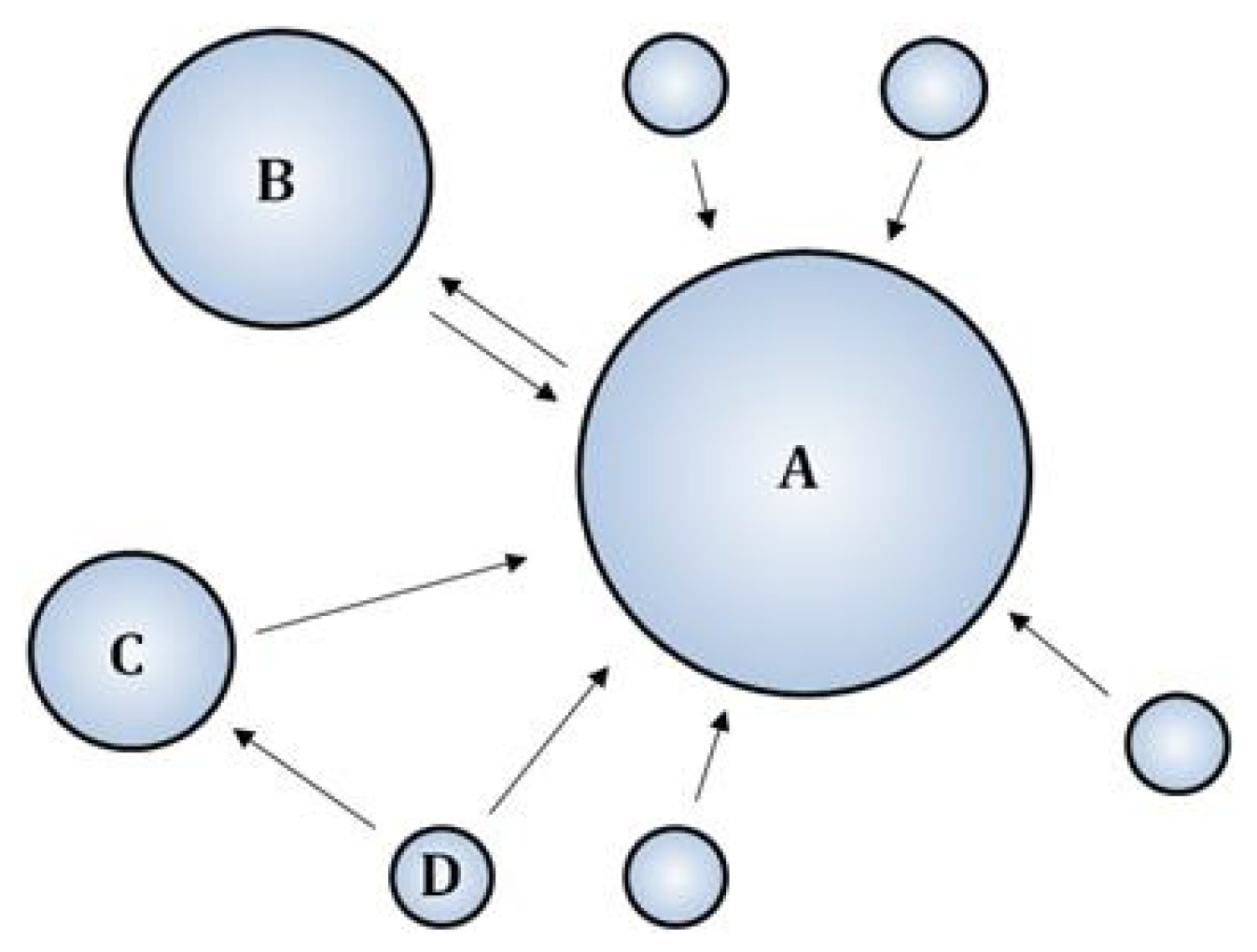
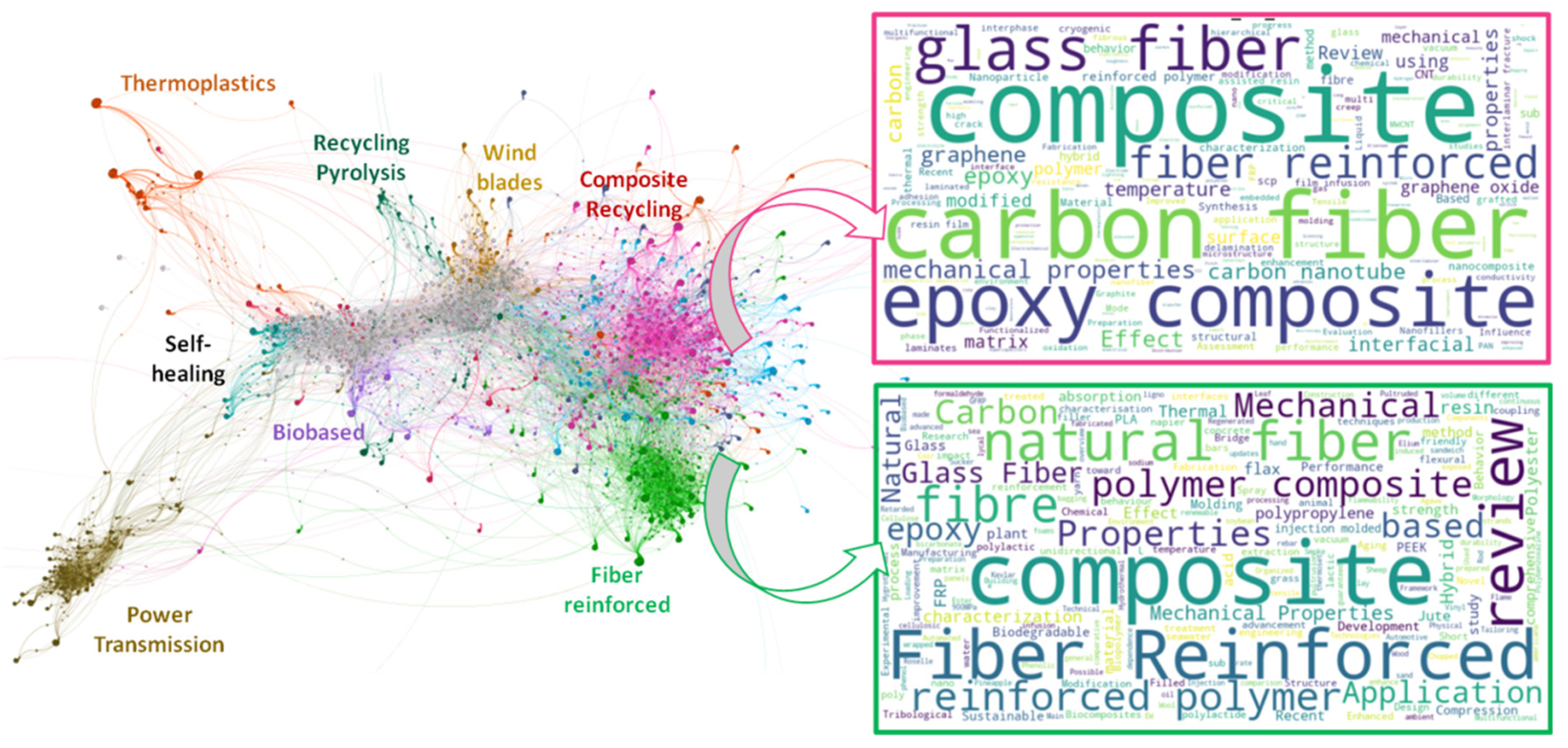
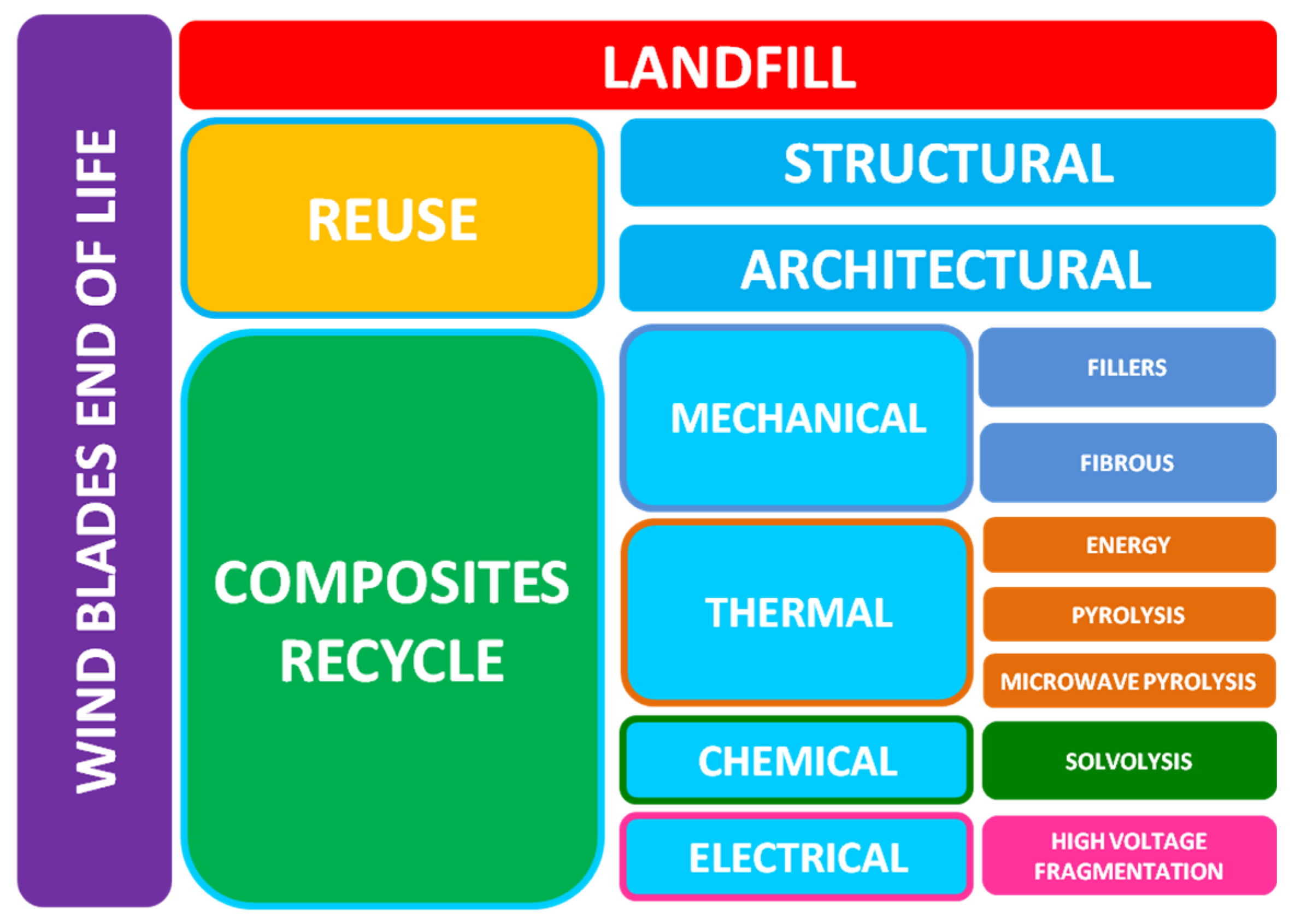


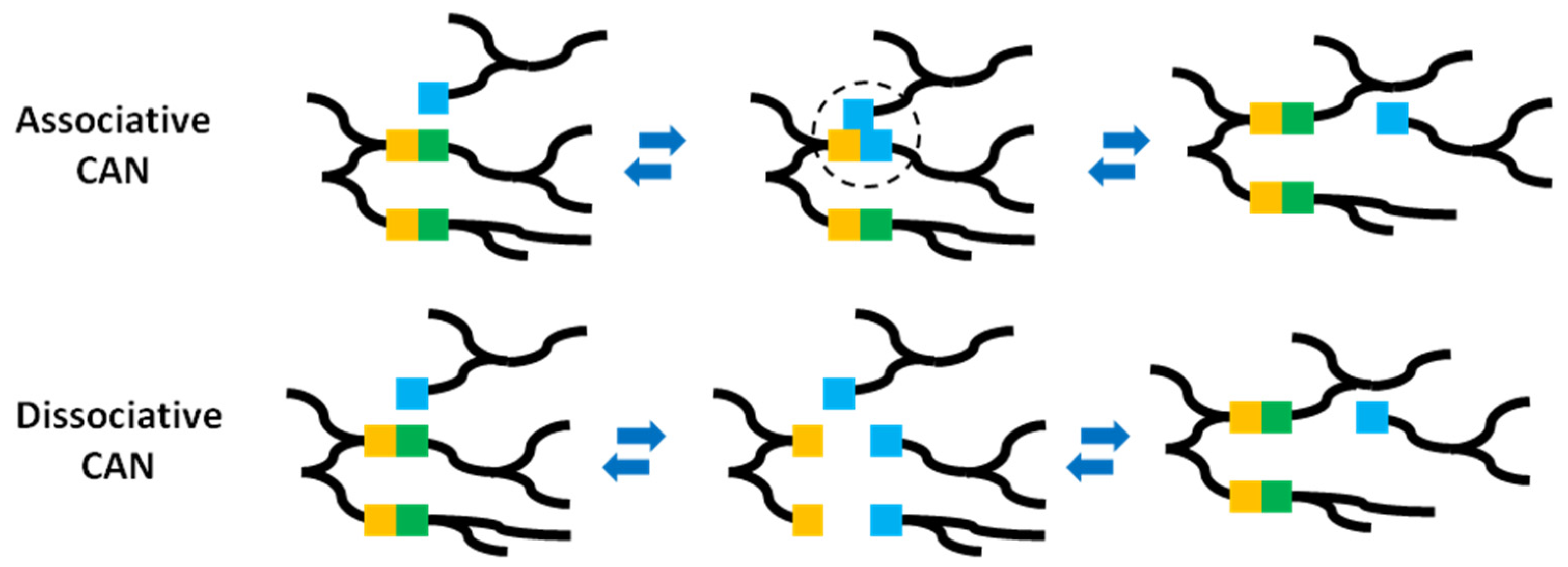

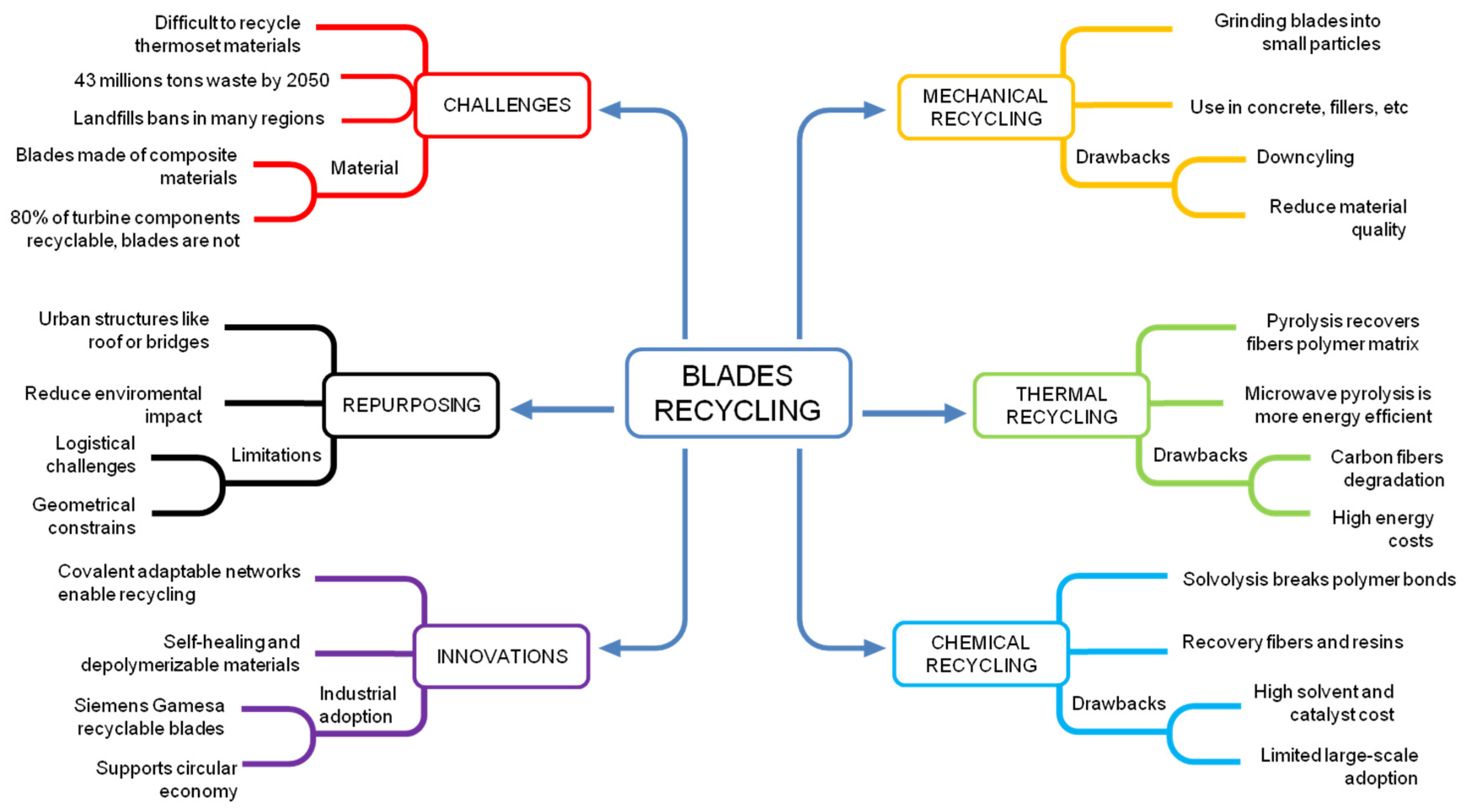
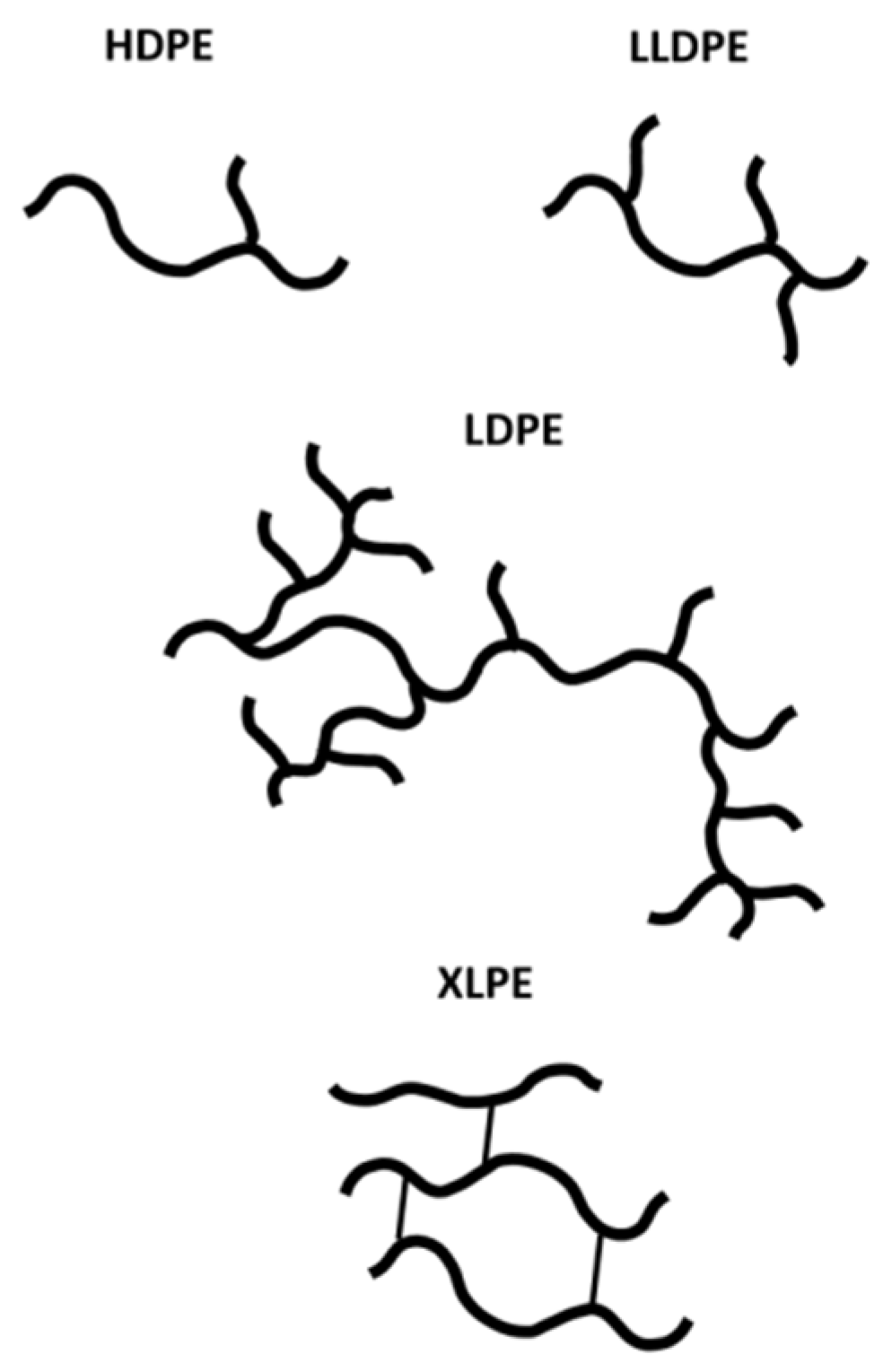
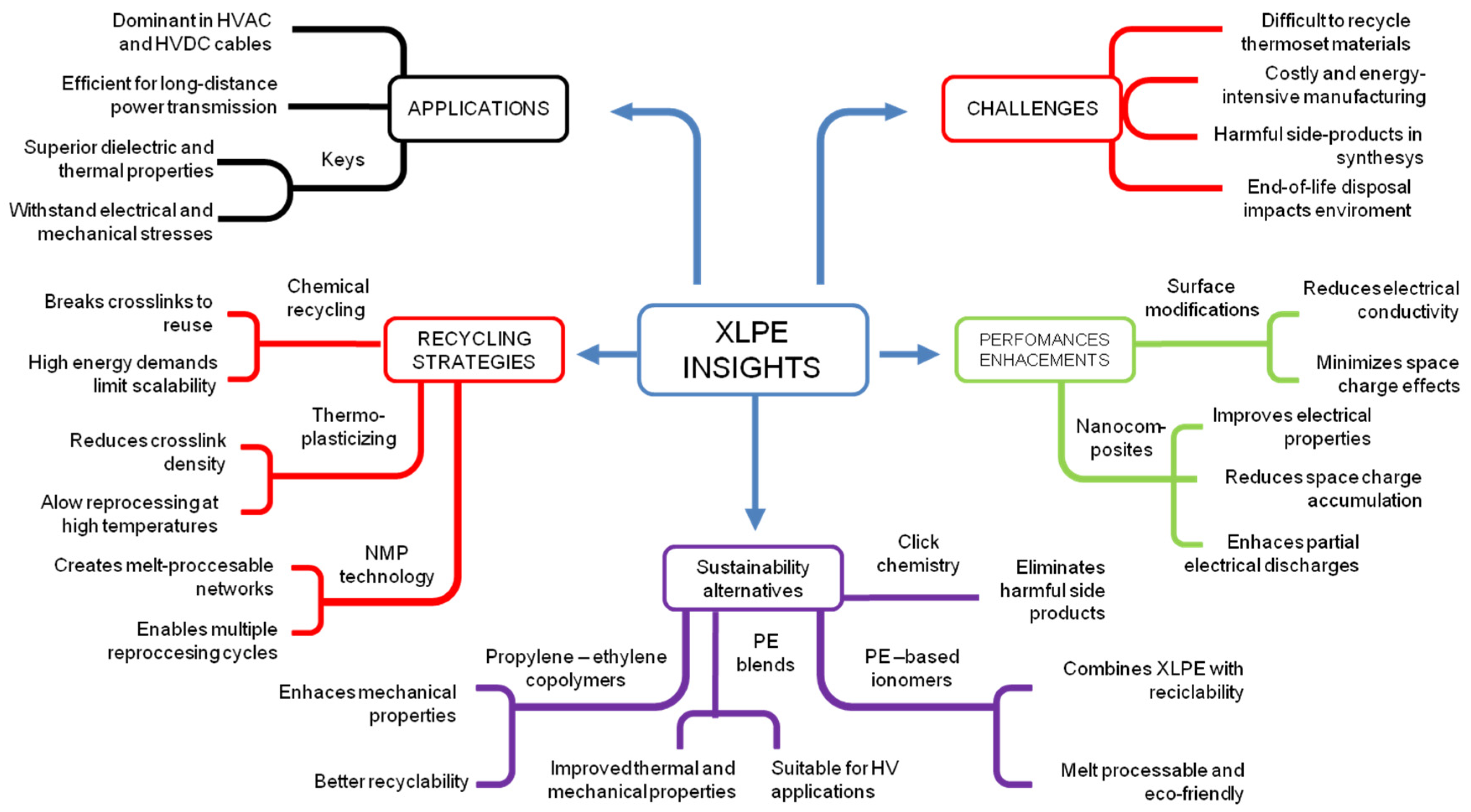

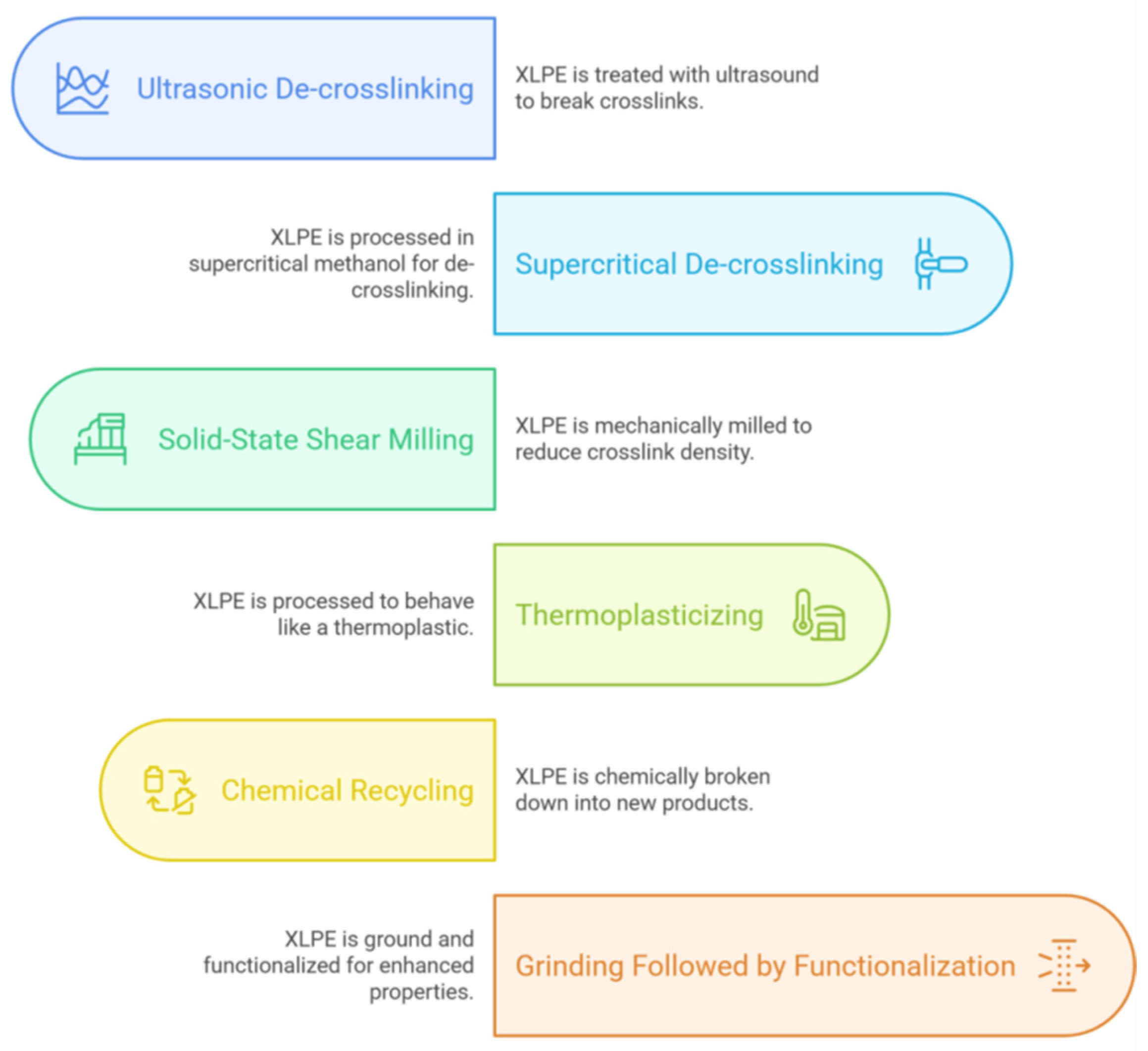
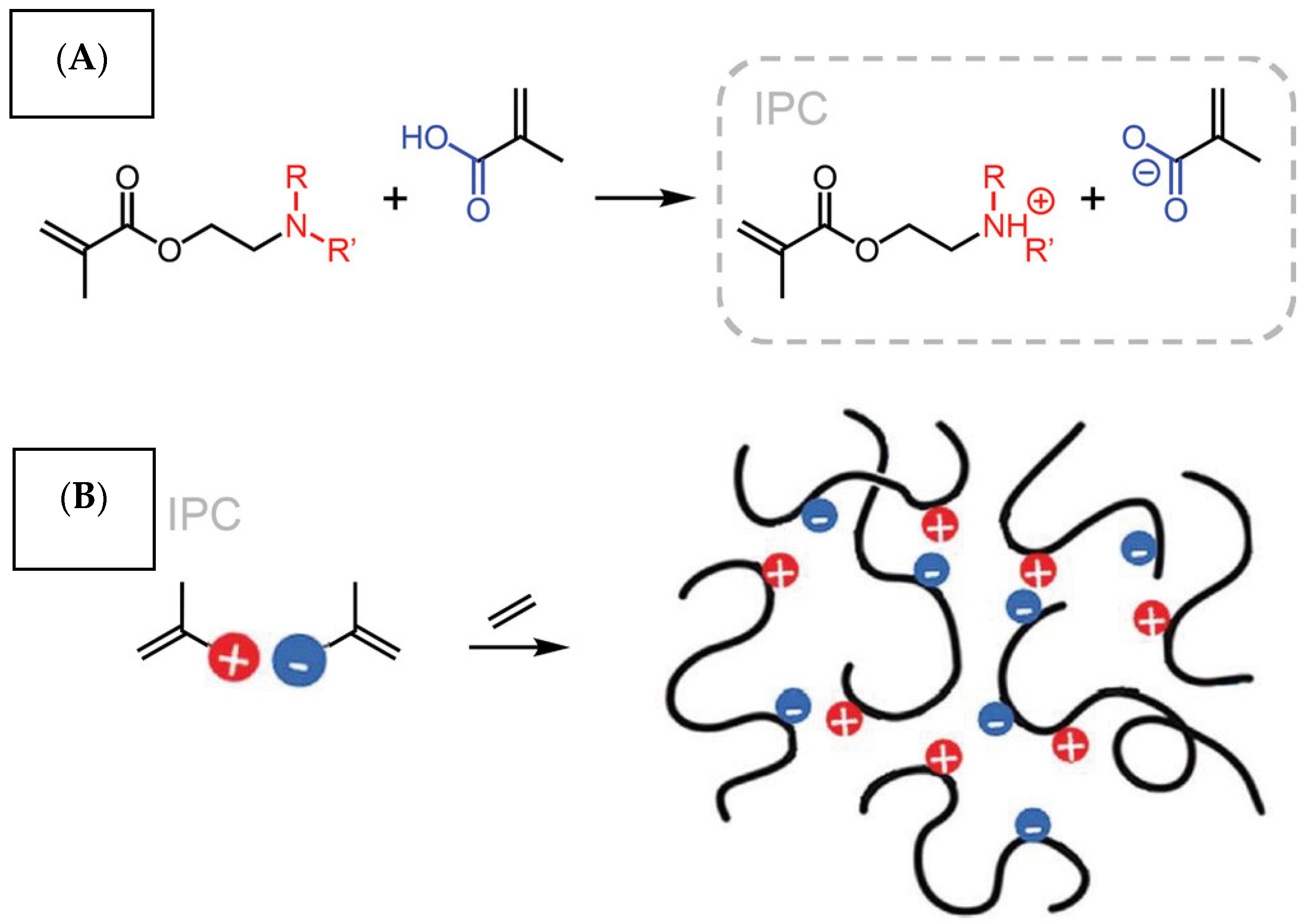
Disclaimer/Publisher’s Note: The statements, opinions and data contained in all publications are solely those of the individual author(s) and contributor(s) and not of MDPI and/or the editor(s). MDPI and/or the editor(s) disclaim responsibility for any injury to people or property resulting from any ideas, methods, instructions or products referred to in the content. |
© 2025 by the authors. Licensee MDPI, Basel, Switzerland. This article is an open access article distributed under the terms and conditions of the Creative Commons Attribution (CC BY) license (https://creativecommons.org/licenses/by/4.0/).
Share and Cite
Casado, U.M.; Altuna, F.I.; Miccio, L.A. A Review on the Role of Crosslinked Polymers in Renewable Energy: Complex Network Analysis of Innovations in Sustainability. Sustainability 2025, 17, 4736. https://doi.org/10.3390/su17104736
Casado UM, Altuna FI, Miccio LA. A Review on the Role of Crosslinked Polymers in Renewable Energy: Complex Network Analysis of Innovations in Sustainability. Sustainability. 2025; 17(10):4736. https://doi.org/10.3390/su17104736
Chicago/Turabian StyleCasado, Ulises Martín, Facundo Ignacio Altuna, and Luis Alejandro Miccio. 2025. "A Review on the Role of Crosslinked Polymers in Renewable Energy: Complex Network Analysis of Innovations in Sustainability" Sustainability 17, no. 10: 4736. https://doi.org/10.3390/su17104736
APA StyleCasado, U. M., Altuna, F. I., & Miccio, L. A. (2025). A Review on the Role of Crosslinked Polymers in Renewable Energy: Complex Network Analysis of Innovations in Sustainability. Sustainability, 17(10), 4736. https://doi.org/10.3390/su17104736







